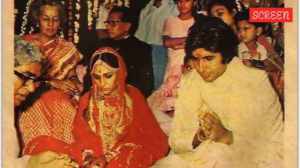‘Adopt sub-categorisation, increase OBC quota to 38% to end Maratha-OBC quota battle’: Banjara community leader
The Banjara community believes if the Hyderabad Gazetteer is considered as a document for Marathas, why not Banjaras, said Banjara Kranti Morcha president and OBC leader Haribhau Rathod.
 Banjara Kranti Morcha president and OBC leader Haribhau Rathod (File photo)
Banjara Kranti Morcha president and OBC leader Haribhau Rathod (File photo)Former Banjara Kranti Morcha president and OBC leader Haribhau Rathod believes piecemeal approach of the state government to resolve reservation disputes will not yield desired results. Temporary solutions will boomerang, throwing newer challenges and threatening the social harmony in Maharashtra. In an interview with Shubhangi Khapre, he suggests the way forward.
Why is the Banjara community protesting in Maharashtra?
The Banjara community wants reservation under Scheduled Tribe (ST) category. At present, they get three per cent reservation under denotified tribe category.
The agitation started after the Maharashtra government’s decision on the Hyderabad Gazetteer
The Banjara community is not against Maratha reservation. The Government Resolution (GR) on Hyderabad Gazetteer issued by the state government was a fallout of Maratha reservation protests in Mumbai led by activist Manoj Jarange Patil seeking Kunbi status to avail OBC quota. The Banjara community believes if the Hyderabad Gazetteer is considered as a document for Marathas, why not Banjaras. In the gazetteer, Banjaras are registered as tribes. Based on this record, Banjaras are also entitled for ST reservation. Moreover, it is not a sudden demand as is being made out. The Banjaras have been fighting for ST quota since 1966 when Maharashtra was led by then CM Vasantrao Naik.
How do you look at growing unrest on reservation with newer communities taking to streets?
This was evident. When long-pending issues are not tackled with permanent solutions, agitations and backlash from communities is natural in society. And irrespective of which government is in power, it cannot ignore the developments. It will have to take an approach to address everybody.
How?
This piecemeal approach adopted by the Devendra Fadnavis-led Mahayuti government will not bring peace. To appease Marathas, you bring the Hyderabad Gazetteer. But it has upset OBCs. So, where is the solution. There are 350 communities within OBCs. They feel threatened. Banjaras are out on the street for ST reservation. Then, there are Dhangars demanding ST quota too. Therefore, I feel the government should take a look at the Karpoori Thakur formula. I have been strongly advocating this formula to resolve the crisis.
What is the formula?
It was in 1978, Karpoori Thakur introduced a 26 per cent reservation model in Bihar for the backward classes in government jobs and education. The break-up was OBC 12 per cent, Most Backward Class 8 per cent, women 3 per cent, and Economically Backward Class (for upper caste) 3 per cent.
Even in Maharashtra, then CM Vasantrao Naik had introduced reservation for the denotified and Nomadic Tribes. The reservation within the OBC category based on sub-categorisation is the only solution to resolve the Maratha versus OBC conflict in Maharashtra. The government should increase the OBC quota from 27 to 38 per cent. The OBCs should be divided into three sub-groups. First group should include the denotified tribe 4 per cent; the nomadic tribes 3 per cent; Dhangar 4 per cent; Vanjari 3 per cent. In group two, Special Backward Class 2 per cent; Barabalutedar 3 per cent; Teli, Mali, Agri, Bhandari 4 per cent; Kachi, Kushwaha, Shaky, Saini, and others 5 per cent. In group three category, Kunbi, Kunbi-Maratha, Maratha-Kunbi, Maratha-Leva, Patidar and Rajput 10 per cent. The total reservation under OBC, including all three groups, will not exceed 38 per cent.
By doing this, the Marathas can be included within OBC quota. At the same time, OBCs’ existing 27 per cent quota will remain uncompromised.
Are you suggesting theory of sub-categorisation also?
Absolutely. The Centre and state should relook and enforce the Rohini Commission Report. Despite implementation of Mandal Commission in 1992, reservation benefits were not uniformly disbursed. The sub-categorisation will bridge the gap between Backward and Most Backward Class. By chalking out sub-categories, you fix quota within existing quota to empower those communities lagging behind within OBCs. Today, only a handful communities within OBC are enjoying the fruits of reservation. Similar is the trend in other quota categories SC/ ST et al.
Why is the Rohini Commission on hold?
It is for the Centre and state government and political leaders to answer. The primary reason could be they fear backlash from established communities who are not willing to let go their hold within quota. The commission led by former Delhi High Court Justice G Rohini was set up in 2017. The task was to examine the disparity in distribution of benefits within reservations. The objective was sub-categorisation of more than 2,600 castes / communities under OBCs to tackle inequality on quota benefits. The commission had submitted its report in July 2023.







